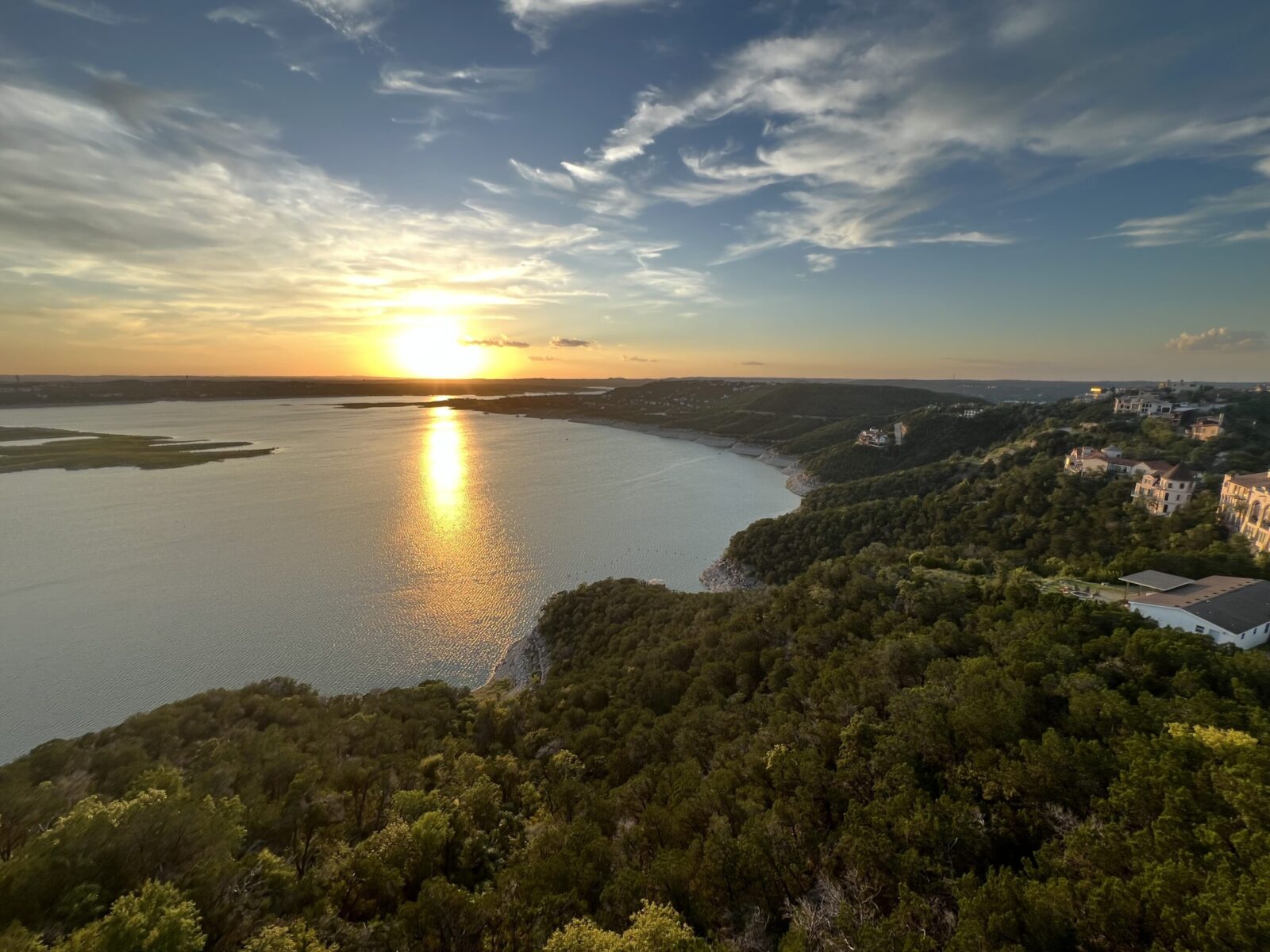How to Keep Your Lawn Healthy in Volente, Hudson Bend, Lakeway, and Beyond
Austin-area lawns aren’t like those in the rest of the country. The combination of rocky soil, scorching summers, and unpredictable rain patterns makes maintaining a lush, green lawn a unique challenge. The key? A seasonal approach to lawn care that works with Central Texas’ distinct climate rather than against it.
Whether you’re in Volente, Hudson Bend, Lakeway, or anywhere around Austin, this guide will help you keep your grass thriving all year long.
Spring (March – May): Waking Up Your Lawn the Right Way
Spring is when Austin-area lawns wake up from their brief winter dormancy. But jump-starting your lawn the wrong way (like fertilizing too early) can actually do more harm than good.
✅ Key Spring Lawn Care Steps
- Dethatch and Aerate (Early March – April)
- Many lawns in our area have Bermuda or St. Augustine grass, which can develop thick thatch layers that suffocate roots.
- Rent an aerator or hire a professional to loosen compacted soil and allow better water absorption.
- If you have clay-heavy soil (common in Lakeway), aeration is even more important.
- First Mow of the Season (Mid-March, When Grass Starts Growing)
- Set mower height to 2-2.5 inches for Bermuda and 3 inches for St. Augustine.
- Avoid scalping the lawn, as it stresses the grass just as it’s coming out of dormancy.
- Apply Pre-Emergent Herbicides (Late February – Early March)
- This prevents pesky summer weeds like crabgrass and dallisgrass from taking over.
- Look for products with prodiamine or dithiopyr, which work well in Central Texas soil conditions.
- Gradually Increase Watering (April – May, as Temps Rise)
- Austin’s typical rainy season happens in May, so don’t overwater early in the season.
- Target 1 inch of water per week, increasing slightly in late spring.
- Fertilize with a Slow-Release Formula (Late April – Early May)
- Too early? You risk encouraging weeds.
- Too late? You miss out on spring growth.
- Use a nitrogen-rich fertilizer (something like 16-4-8) to promote green-up.
Summer (June – August): Surviving the Heat
Central Texas summers are brutal on lawns, with triple-digit temperatures and sporadic rain. The key to summer lawn care? Water management and stress reduction.
✅ Key Summer Lawn Care Steps
- Adjust Mowing Height (Keep It Longer!)
- Set mower to 3 inches for Bermuda and 3.5-4 inches for St. Augustine to provide shade and reduce evaporation.
- Mow early in the morning or evening to avoid heat stress on the grass.
- Deep Watering, Not Frequent Sprinkling
- Water early in the morning (5-9 AM) or late at night (8-11 PM) to reduce evaporation.
- Aim for 1-1.5 inches per week, delivered in deep, infrequent soakings rather than short daily sprinkles.
- If you have rocky or thin soil (common in Volente and Hudson Bend), a soaker hose may work better than traditional sprinklers.
- Apply Organic Mulch Around Trees and Garden Beds
- This helps retain moisture and keeps the soil temperature lower.
- Consider Texas native mulch like cedar or pecan, which performs well in our climate.
- Spot-Treat Weeds Instead of Blanket Spraying
- High heat can make herbicides volatile, meaning they can drift and damage your lawn.
- Use a targeted post-emergent weed killer in early morning or late evening to minimize stress.
Fall (September – November): Repair and Strengthen
Fall is Central Texas’ secret weapon for lawn care. The cooler temps and occasional rain make it the best time to overseed, fertilize, and fix summer damage.
✅ Key Fall Lawn Care Steps
- Overseed Bare Spots (Early September – Mid-October)
- If your lawn suffered summer stress, now’s the time to overseed.
- For Bermuda grass, use Bermuda seed.
- For St. Augustine, use plugs, as it doesn’t grow well from seed.
- Final Fertilization (Late October – Early November)
- Use a fall fertilizer with a higher potassium content (like 10-10-20) to strengthen roots before winter.
- Lower Mowing Height Slightly (Late Fall)
- This reduces disease risk going into winter.
- Water Less Frequently, But Don’t Stop Completely
- As temps cool, reduce watering but still ensure at least ½ inch per week if there’s no rain.
Winter (December – February): Minimal Care, Maximum Protection
Winter in the Austin area is mild, but a few cold snaps (hello, 2021 freeze!) can damage your lawn if you’re not prepared.
✅ Key Winter Lawn Care Steps
- Final Mow Before Dormancy (Late November – Early December)
- Keep it shorter than usual (about 2 inches) to prevent disease.
- Don’t Overwater
- Reduce watering to once every 2-3 weeks, depending on rainfall.
- Winter Weed Prevention
- Apply a pre-emergent herbicide in late January to stop weeds from emerging in early spring.
- Protect Against Hard Freezes
- If extreme cold is coming, cover tender plants and shallow-rooted grass areas with burlap or frost blankets.
Final Thoughts: Lawn Care in the Austin Area is All About Strategy
Your lawn doesn’t need to be perfect year-round—it just needs to be resilient. By following a seasonal approach, you’ll work with the natural climate rather than against it, keeping your lawn greener, healthier, and easier to maintain.
👉 Need Professional Help? Whether you’re dealing with rocky soil in Volente, the lakeside humidity of Hudson Bend, or HOA landscaping requirements in Lakeway, Texas Property Concierge has the expertise to keep your lawn in top shape all year. Contact us today for a custom lawn care plan!

